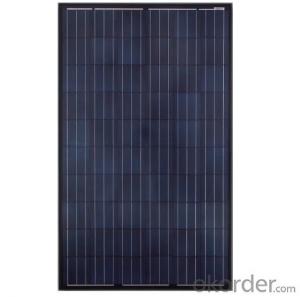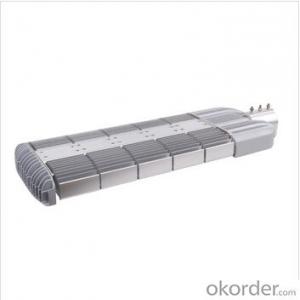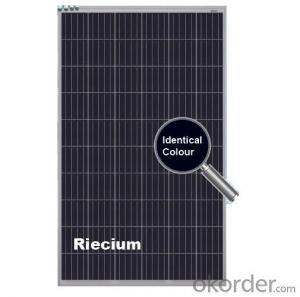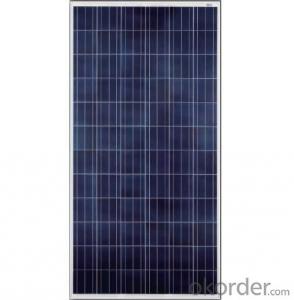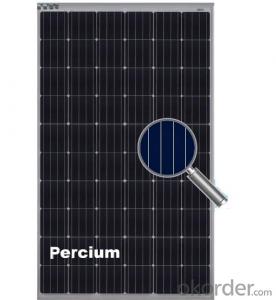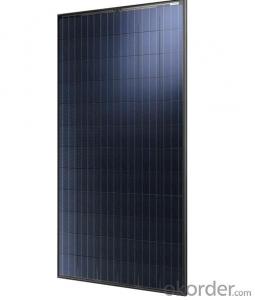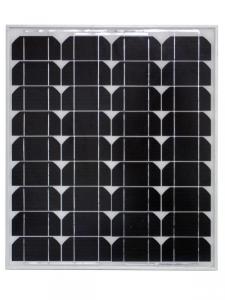Solar Panels on Shed - Poly Panel JAP6(BK) 60 240-260W 3BB
OKorder Service Pledge
OKorder Financial Service
You Might Also Like
JAP6(BK) 60 240-260W 3BB MULTICRYSTALLINE SILICON MODULE
Key futures:
Mulyicrystalline modules designed for redidential commercil and utility applications,rooftop or ground mount.
high output and highest conversion effciency of 16.21%.Designed for IEC DC 1000V applications.
Anti-reflective and anti-soiling surface reduces power loss from dirt and dust;
outstanding prformance in low-light irradiance environments;
excellent mechanical load resistance:certified to wothstand high wind loads (2400pa)and snow loads(5400pa)
high salt and ammonia resistance certified by TUV NORD
Datasheet:
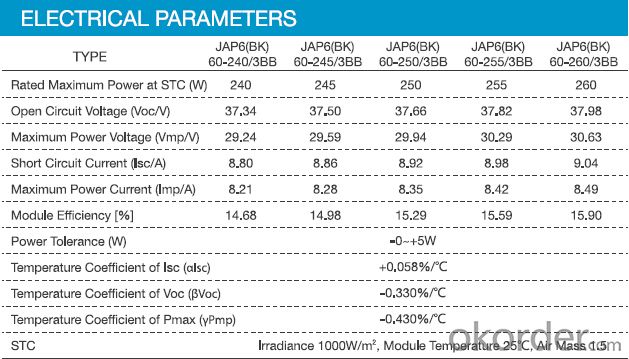
- Q: I want to know how you can store energy using a solar panel. The energy stored needs to be stored so that a light or laptop charger can plug in to it.
- probably a deep discharge lead calcium batteries, with a switching regulator cycloconverter or cycloinverter output to match the current and voltage requirements of the operated device.
- Q: I have a cabin that is way out in the middle of no where, it would cost 000's of dollars to get power to it. If I have a 8,000 BTU air conditioner that runs on 25 volts and 5 amps (or 875 watts)How many solar panels will I need to run this during the day, plus charge the batteries to run it all night? How many batteries would I need
- OK, in addition to the solar panels, you wil need an inverter (DC to AC; 2V t0 20V) capable of delivering 20A continuously and as much as 40A for the compressor starting surge, and a fairly large battery bank capable of delivering something over 2000 watts continuously (losses in the charging and conversion process) as well as the surge. So, if your actual demand is now calculated around 2000 watt/hour, and you need to both run the unit and charge batteries during the daylight hours - and considering that the ideal charging rate for a lead-acid battery is on the order of 0% of its capacity, you will need a huge reserve on the battery section and a huge excess on the solar section to make up for the 5 hours maximum input. So, the average high-quality deep-discharge battery will do about 400Ah @ 2.6V. Which comes to 5040 watts for one hour. For round figures, it will give you 2000 watts for 2.5 hours. You will need a minimum of eight of them just to make your system run for the 9 hours you are anticipating. Given that you do not want to run the batteries to zero each night, a 50% reserve would be a wise investment - comes to now twelve (2) batteries. Now, you will have to make 2000 watts (to run the unit) and also produce and another 8600 (per hour for five hours) watts to charge the batteries for the next night. Again, for round figures, you will need 0,000 watts of solar power, or seventy (70) panels. At ~0 watts/s.f. (00 watts/meter), that comes to about 000 square feet or 00 square meters. Modern non-crystaline panels may reduce this by 20%, or so but no more than that. You will be charging the batteries at roughly 20% of their discharge capacity - which will pretty much cut their service live in half, or so. As the average deep-discharge battery has about an 8-year life span under ideal conditions (and your situation will be far from ideal) you may expect to replace them every four years or so with good care. Much less with no care.
- Q: ASAP :) as much details as possible
- it would to reduce reliance on other sources of energy as solar is harnessed. It creates jobs for engineers and technicians. It has high initial cots, but is cheaper and stable in the long-run. Thus cost of production fall, AS curve shift downwards. Unemployment rate would fall as jobs are created. C rise. I rise.
- Q: Is there a cheaper way on how to make your own solar panels ? Can someone share their real life experience ? Thank you.
- I did my own solar panel at a fraction of a commercial one by diy manual. I think some of the important criteria to consider about these diy manual are : . is it proven by many of its readers ? 2. How easy to follow the manual ? 3. Any video showing the steps to assemble your own panel ? 4. Any after sales support ? You can cut down your electricity bill on some small appliances like your labtop or fans, but not practical on heavy duty appliances like air-cond, etc.
- Q: How do solar panels affect the overall energy consumption of a building?
- Solar panels can significantly reduce the overall energy consumption of a building. By harnessing the sun's energy and converting it into electricity, solar panels provide a clean and renewable source of power. This reduces the reliance on traditional fossil fuel-based electricity, leading to lower energy bills and a reduced carbon footprint. Additionally, excess energy generated by the solar panels can be stored or fed back into the grid, further offsetting the building's energy consumption.
- Q: Can solar panels be used in areas with high levels of pollution from industrial emissions?
- Yes, solar panels can still be used in areas with high levels of pollution from industrial emissions. While pollution can potentially reduce the efficiency of solar panels by blocking sunlight, advancements in technology and design have made solar panels more resilient. Additionally, regular maintenance and cleaning can help mitigate the impact of pollution on solar panels, ensuring they continue to generate electricity effectively.
- Q: Is it really necessary to make solar panels that expensive?
- First Solar recently announced that their costs to produce panels dropped below $ per watt. I don't know how much of that is accounting tricks. Of course, that doesn't mean that they would sell panels for that price - any capitalistic company is expected to drive the price up to what the market will bear. Crystalline silicon panel producers are coming in at about $2.50/watt right now for the best of them. But again, the selling price is what the market will bear.
- Q: Can anyone tell me how to connect a solar panel from a calculator to a motor from an RC car.
- can increase your voltage from a single solar panel. In combination with a large capacitor, you could deliver short bursts of power to the motor which would allow intermittent operation.
- Q: i really love the idea of solar and want to start out small, so i'm new to this.I plan on getting an 85w panel to charge my laptop. what other equipment is needed to accomplish this?would i need to get a battery or does the solar panel hook directly to the laptop. Does one end just lead to a conventional outlet similar to a wall outlet?could someone please give me a detailed explanation with options about this? i would greatly appreciate it.
- humm..... .need HUGE solar panel (alot) 2. wires 3. aligato clips . put the panels on the roof 2. use the aligator clip to clip the wire from the panel to the bars of the pluger of the comp. charger 3.tada mark me best:)
- Q: why don't we take a cue from mother nature and make our soar panels like trees? thousands of leaves or needle (like a pine tree) instead of one big flat panel? I mean it seems to work pretty good for all the plants i see why would it not work for us. It would be aesthetically pleasing and with the right engineering wouldn't it make them not have to worry about tracking the sun? i already have some ideas about the process of making them just no available labratory.
- Because we and the trees are trying to solve a different problem. We want electricity, a tree wants light (and some heat) for photosynthesis. In getting the electricity we use Silicon for solar panels. (Sometimes Gallium Arsenide). And we exploit the same thing in Silicon that allows them to be computer chips. The fact that they conduct differently when voltage is applied. But for a solar panel that is done essentially in reverse. We GET a voltage difference (electricity) from shoving energy through it. Look up junction bias on google or yahoo for explanation. But the DESIGN problem is: You have to couple these panels together the right way - according to their bias. You can't string them up willy nilly. There is a pattern. And when one breaks in this pattern. (I mean when the actual panel cracks, which they do easily as they are brittle). It can change the overall bias. This can make even be worse than if it was removed, it can actually fight against the working ones. The efficiency is there in arranging them like a tree, but the practicality of maintenance would be daunting.
Send your message to us
Solar Panels on Shed - Poly Panel JAP6(BK) 60 240-260W 3BB
OKorder Service Pledge
OKorder Financial Service
Similar products
Hot products
Hot Searches
Related keywords
